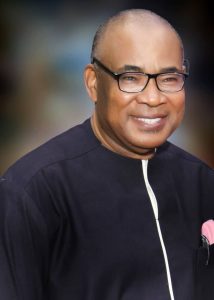
THE SPIRIT MOVEMENT
By 1927, a revival called the Spirit Movement broke out in the southeastern part of Nigeria, among the Annang and the Ibibio in present-day Akwa Ibom State. The Spirit Movement was indigenous in its origin. According to Dr Edwin Orr, there was no Pentecostal influence within hundreds of miles of this area of Nigeria. The revival started with a young indigenous evangelist, called Jonathan, who was overwhelmed by the “presence and power of the Holy Spirit,” while reading the word of God.
Not much is known about Jonathan than that he was, “A man not particularly attractive, but thoroughly in earnest, of more than average intelligence and a great lover of his Bible, was used to spending long hours in private prayer.” He was studying the word of God in company with another evangelist when they were overwhelmed by the presence of the Holy Spirit.
West Garth, a missionary who was an eyewitness to this revival, confirmed that his cook also had a similar Holy Spirit encounter during the revival. He described one of the scenes of the revival this way: “The meeting went on increasing in fervour all the time. Then, although there was no moonlight, neither wind nor rain to cause any sound, a peculiar noise was heard in and around the church as of falling rain, and the place was lit up with a peculiar light. Many spoke of seeing a beautiful figure in a vision. There were great speaking in tongues, and they thought that God had visited them in a second Pentecost.”A district missionary of the Qua Iboe Church described the revival this way: “These are strange days, days when order and timetables were very much upset.”
A HOLY SPIRIT REVIVAL
Just as in the days of Pentecost, there were varieties of manifestations among, baptized, uneducated, untrained, and inexperienced men and women. Many conversions of souls were reported to have taken place during the Spirit Movement. By 1934, missionaries from this revival were later sent to evangelize and plant churches among the Bassa and Igala peoples in the Middle Belt. They arrived in Igala land in 1934 and Bassa land two years later. Prayer was a prominent feature of this revival. Floods of prayer went up to heaven in the period preceding the revival, both from the indigenes and from the missionaries.
Diverse miracles were experienced during the Spirit Movement. In one instance, a man asked the revivalists to burn his idols, which they gladly did. He later turned around to deny that he ever asked them to burn his idols. He reported the matter to the District Officer, who charged the men to the court. The court sentenced the revivalists to imprisonment. In prison, God intervened wonderfully. West Garth reports that, “each night they were bound, and it is a fact that, although their hands were fastened in different ways, including the usual handcuffs, on three successive mornings, the handcuffs were off. One of the prisoners told me that, as they sang and praised God, the prison was filled with light and the shackles came off. I do not see any reason to disbelieve that the fastenings were miraculously removed.”
DECLINE
The Spirit Movement began to decline when the leaders began to place too much emphasis on prophecies, visions, and dreams, rather than on the word of God and evangelism.
For details consult: “The Best Is Yet to Come: Pentecostal and Charismatic Revivals 1919 to 1990s.”
Contact: pastoracukachi@gmail.com




